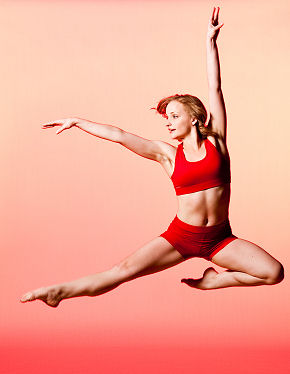3 June 2011
The color red provides speed and strength boost
by Kate Melville
 When humans see the color red, their reactions become both faster and more forceful. People are mostly unaware of the color's muscle boosting effect, but a new study suggests it could give sportspeople the edge in activities in which a brief burst of strength and speed is critical. The findings, published in the journal Emotion, note that the color energy boost is likely short-lived.
When humans see the color red, their reactions become both faster and more forceful. People are mostly unaware of the color's muscle boosting effect, but a new study suggests it could give sportspeople the edge in activities in which a brief burst of strength and speed is critical. The findings, published in the journal Emotion, note that the color energy boost is likely short-lived.
"Red enhances our physical reactions because it is seen as a danger cue," explained study co-author University of Rochester's Andrew Elliot, whose previous research there showed an increase in sexual attractiveness for women wearing red. "Humans flush when they are angry or preparing for attack. People are acutely aware of such reddening in others and its implications."
But the extra energy has a downside. "Threat also evokes worry, task distraction, and self-preoccupation, all of which have been shown to tax mental resources," said co-researcher Henk Aarts, at Utrecht University, in the Netherlands. In earlier color research, exposure to red has proven counterproductive for skilled motor and mental tasks: athletes competing against an opponent wearing red are more likely to lose and students exposed to red before a test perform worse.
The findings are based on two experiments. In the first, the subjects pinched and held open a metal clasp. Right before doing so, they read aloud their participant number written in either red or gray crayon. In the second experiment, the subjects squeezed a handgrip with their dominant hand as hard as possible when they read the word "squeeze" on a computer monitor. The word appeared on a red, blue, or gray background.
In both scenarios, red significantly increased the force exerted, with participants in the red condition squeezing with greater maximum force than those in the gray or blue conditions. In the handgrip experiment, not only the amount of force, but also the immediacy of the reaction increased when red was present.
The researchers caution that the study focused exclusively on non-directional physical responses, allowing them to measure the energy response of participants, not their behavior, which can vary among individuals and situations. The familiar flight or fight responses, for example, show differing reactions to threat.
Related:
Did Trichromatic Vision Evolve Because of Colorful Bottoms Or Colorful Fruit?
Women more likely to bed men in red
